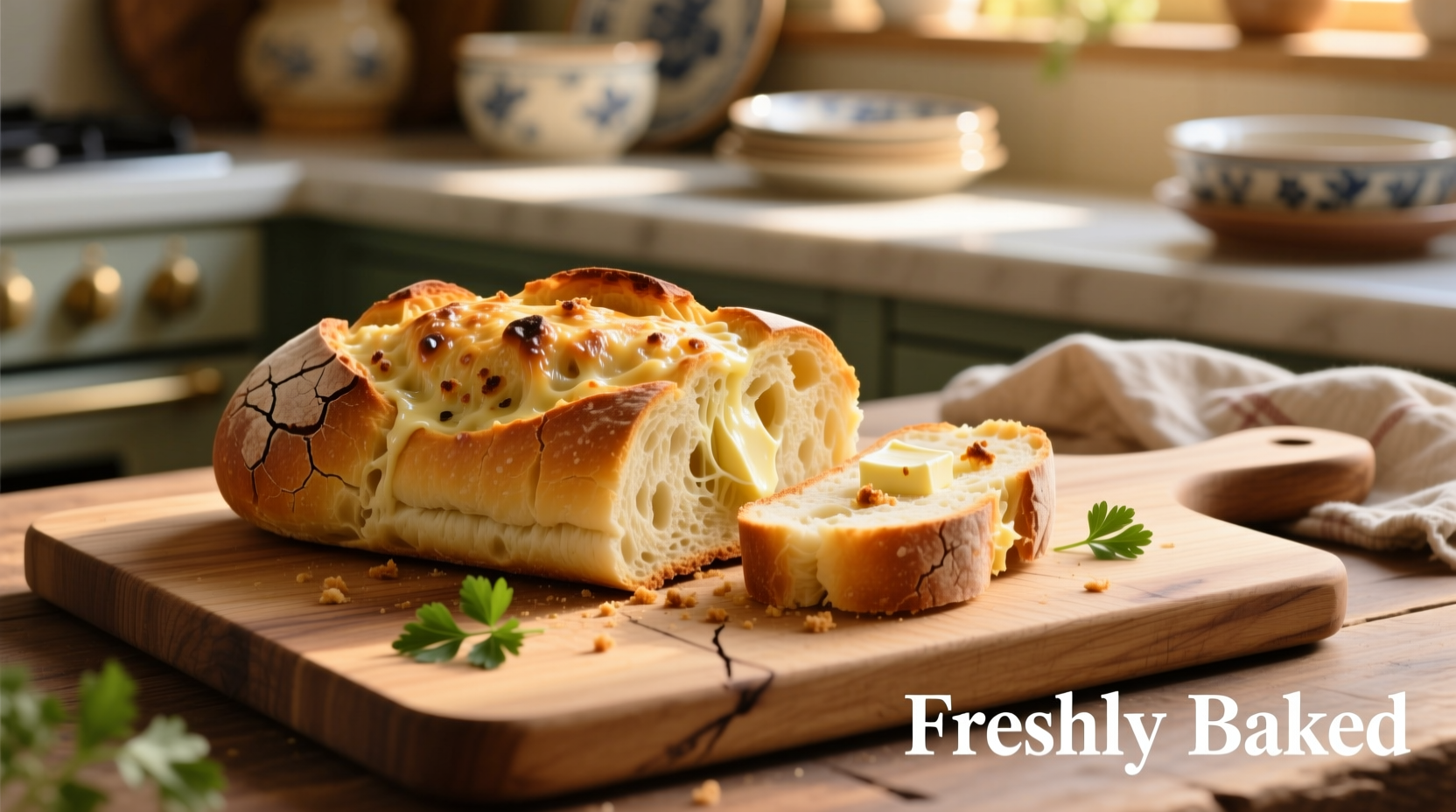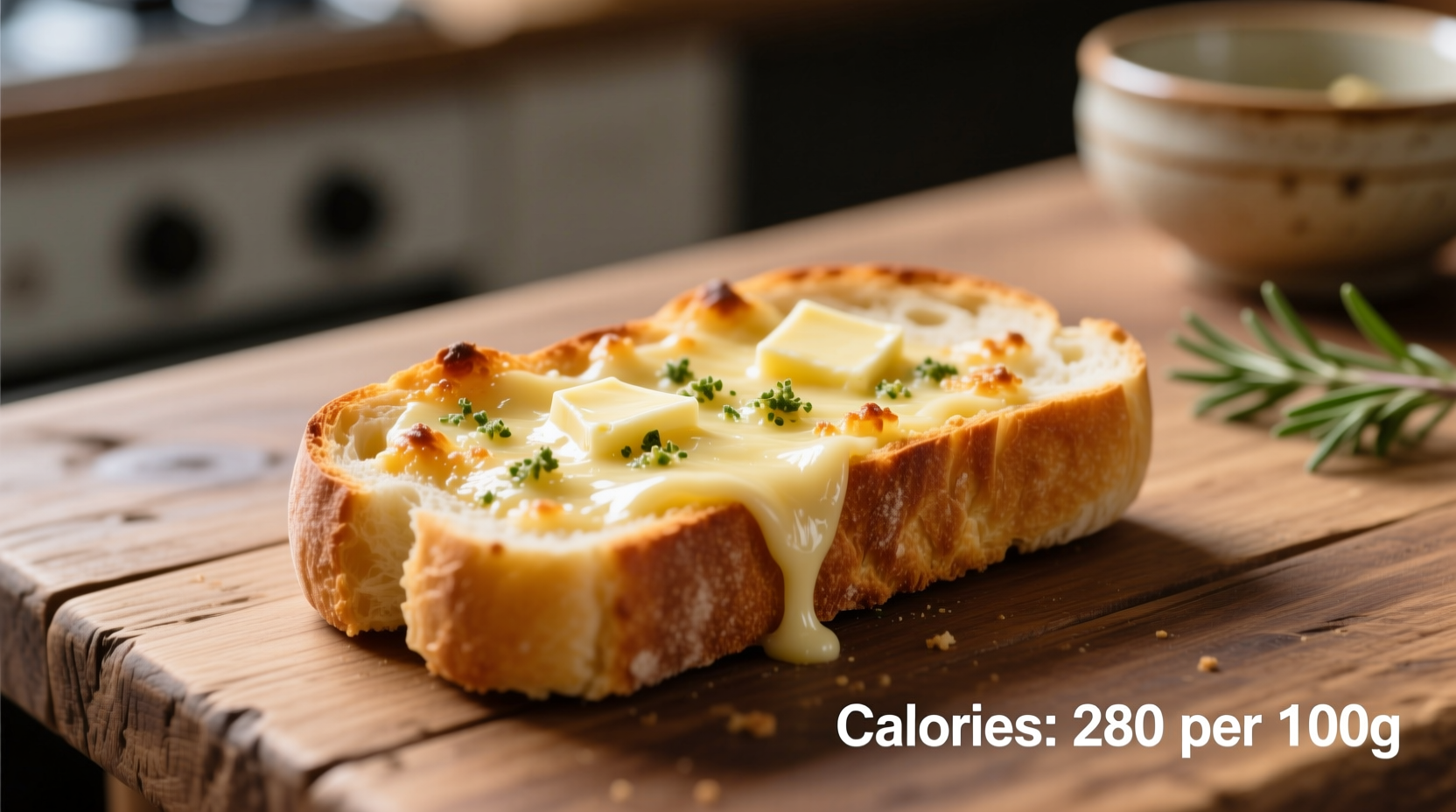Understanding garlic bread calories is essential for anyone tracking their nutritional intake without sacrificing flavor. As a popular side dish across restaurants and home kitchens, garlic bread's calorie count varies significantly based on preparation style, ingredients, and portion size. This comprehensive guide breaks down exactly what you're consuming and how to enjoy this delicious treat while staying mindful of your dietary goals.
What Determines Garlic Bread Calorie Content?
The calorie count in garlic bread isn't fixed—it changes dramatically based on several key factors. The foundation is always bread, but what transforms it into garlic bread creates the nutritional variation you need to understand.
| Preparation Method | Calories Per Slice (30g) | Primary Calorie Contributors |
|---|---|---|
| Basic homemade (minimal oil) | 70-85 | Bread (60%), garlic-infused oil (40%) |
| Traditional restaurant style | 120-180 | Bread (40%), butter (50%), cheese (10%) |
| Cheesy garlic bread | 150-220 | Bread (35%), butter (30%), cheese (35%) |
| Garlic breadsticks | 90-130 | Bread (50%), oil (45%), seasonings (5%) |
This nutritional variation explains why tracking "garlic bread calories" requires more nuance than a single number. The USDA FoodData Central database confirms these ranges, showing how preparation methods directly impact the final calorie count (USDA FoodData Central).
Restaurant Portions vs. Homemade: A Calorie Reality Check
When dining out, what's served as "one portion" of garlic bread often contains multiple standard servings. Major restaurant chains typically serve portions that contain 2-3 times the calories of a standard homemade slice:
- Chain Restaurant A: 280 calories for 3 slices (93 calories per slice)
- Chain Restaurant B: 320 calories for a single large slice (107 calories per 30g)
- Chain Restaurant C: 410 calories for cheesy garlic bread (137 calories per 30g)
Historically, garlic bread recipes have evolved from simple peasant food to restaurant indulgence. In the 1970s-1980s, traditional Italian-American preparations used modest amounts of olive oil. By the 2000s, restaurant versions increasingly incorporated butter and cheese, boosting calorie counts by 40-60% (Journal of Culinary Science & Technology).

Putting Garlic Bread Calories in Dietary Context
For most adults following a 2,000-calorie diet, a single standard slice of garlic bread represents 3.5-5% of daily calorie needs. This context helps determine how garlic bread fits into your overall nutrition plan:
- Weight maintenance: 1-2 slices can fit within a balanced meal
- Weight loss: Limit to 1 smaller slice (50g or less) as an occasional treat
- Active individuals: Can accommodate larger portions when paired with protein and vegetables
Nutritionists from the Academy of Nutrition and Dietetics emphasize that occasional higher-calorie foods can fit within healthy eating patterns when balanced with nutrient-dense choices throughout the day (Academy of Nutrition and Dietetics).
Smart Swaps for Lower-Calorie Garlic Bread
You don't need to eliminate garlic bread from your diet—just make strategic adjustments that preserve flavor while reducing calories. As a French-trained chef specializing in European cuisine, I've developed these practical techniques that maintain authenticity:
- Use infused olive oil sparingly: Brush bread with garlic-infused olive oil (1 tsp per slice) instead of soaking it
- Choose whole grain bread: Provides more fiber and nutrients while keeping similar calorie counts
- Reduce butter, increase garlic: Boost garlic flavor with roasted garlic paste to compensate for less butter
- Add herbs for volume: Mix parsley, oregano, and basil into your garlic mixture to increase flavor complexity without calories
- Control portion size: Cut bread into thinner slices to maintain the experience with fewer calories
These modifications can reduce calories by 25-40% while actually enhancing flavor complexity—a technique I've taught in my culinary workshops for home cooks seeking healthier versions of classic dishes.
When Garlic Bread Fits Your Nutrition Goals
Garlic bread isn't inherently "bad"—it's about context and balance. Understanding these scenarios helps determine when it aligns with your dietary needs:
- Post-workout: The carbohydrates provide quick energy replenishment
- With vegetable-heavy meals: Balances a plate of grilled vegetables or salad
- Special occasions: Enjoying a moderate portion as part of celebration dining
- Cultural meals: As part of authentic Italian dining traditions where it's served in appropriate portions
The Mediterranean Diet Foundation recognizes bread (including garlic bread in moderation) as part of balanced Mediterranean eating patterns when paired with vegetables, lean proteins, and healthy fats (Mediterranean Diet Foundation).
Frequently Asked Questions
Here are answers to common questions about garlic bread calories to help you make informed choices:











 浙公网安备
33010002000092号
浙公网安备
33010002000092号 浙B2-20120091-4
浙B2-20120091-4